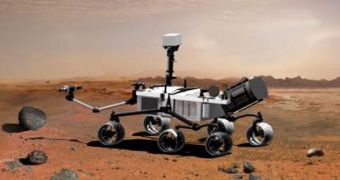The next NASA rover to go to Mars is the Mars Science Laboratory, planned to be launched in December 2009 and to land on the red planet in October 2010. The design of this rover is slightly different than that of current rovers on the surface, Spirit and Opportunity.
Most likely, it will be altered, so that it will no longer crush soil and rock samples to analyze them on the spot; instead, it will store some of them to bring them back to Earth at the end of the mission. This could mean shorter time for sample delivery to Earth, exactly what a new report marks as the highest scientific priority for future Mars missions.
The possibility of bringing back samples from Mars has been previously discussed, but cost and complexity made it almost impossible a few years ago. However, scientists are lobbying this proposal, saying that it would be much more valuable to actually study the samples on Earth, where more technology is available.
Complex studies performed on Earth could help them learn new things about space climate, geochemistry and the existence of past and possibly even present life on Mars. So, NASA is seriously considering modifying the robotic arm of the rover to allow it to store some samples on board, for later return to Earth.
"The highest-priority science objective for Mars exploration must be the analysis of a diverse suite of appropriate samples returned from carefully selected regions on Mars," states a report by the US National Research Council (NRC), regarding the strategy for detecting life on Mars.
So, it seems that there is a good chance for the massive 185 kg (408 lb) new robot to be altered to perform the first task of caching samples, which could answer the question of the existence of microbial life on Mars.

 14 DAY TRIAL //
14 DAY TRIAL //